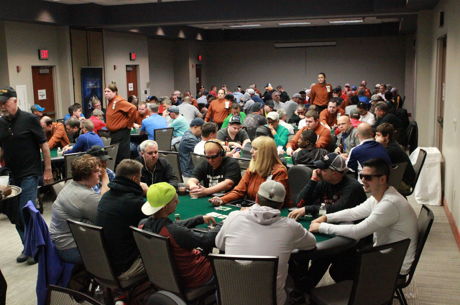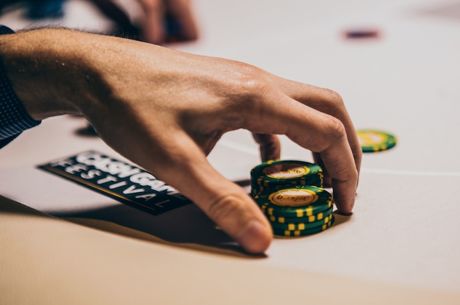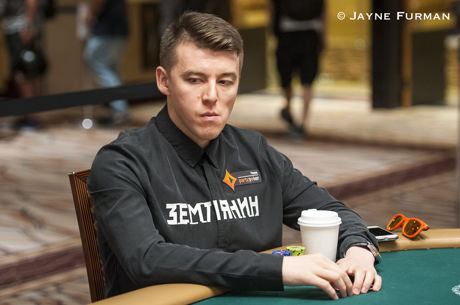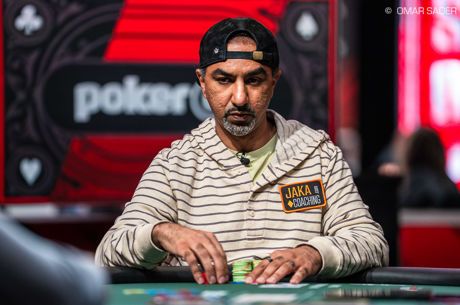Three Common Early Level No-Limit Hold'em Tournament Mistakes
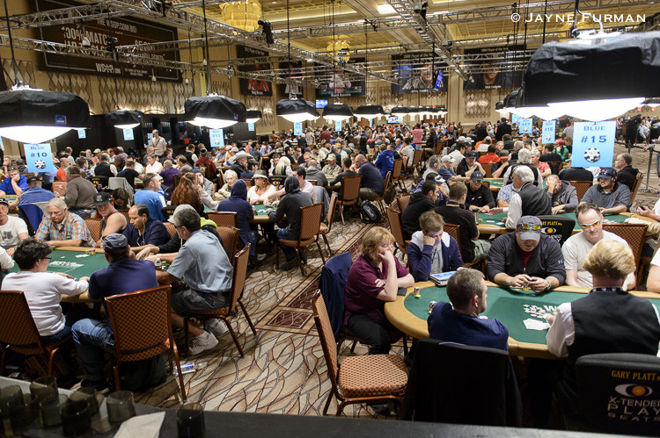
The 2017 World Series of Poker has many poker players presently focused on tournaments, including those more used to cash games and less nuanced in the different strategies tournaments require.
Money is won differently in tournaments than in cash games, of course. Depending on the payout schedule, usually the top 10-15 percent of finishers in a tournament will realize a profit, while in cash games every single hand potentially affects a player's win rate.
While the bubble and payout jumps late in a tournament are important and should affect strategy, the more significant strategic difference between tournaments and cash games concerns the increasing blinds and antes. In a cash game, the blinds (and antes, if in play) remain static, but in a tournament they start going up right from the very beginning.
Players more familiar with cash game strategy often fail to appreciate the importance of increasing blinds and antes, in particular early when the increases don't seem to be as significant. Thus especially during those early levels they'll mistakenly play tournaments like cash games, and often suffer as a result.
Here are three of the more common early level tournament mistakes made by players such as these �� that is, either cash game regulars or those new to tournaments who aren't mindful of the effects of blind and ante increases.
Mistake #1: Playing Too Many Hands
Experienced tournament players understand the need for patience in tournaments, particularly during the early levels when there are often many chances to lose significant chips but relatively few opportunities to win big pots.
Depending on the tournament's structure, the first level (or few levels) may afford players relatively "deep" stacks as indicated by the ratio of big blinds to total chips. For example, a starting stack of 3,000 chips in a tournament starting with 10/20 blinds means players begin with deep stacks of 150 BBs.
Novice tournament players will sometimes mistakenly regard deep starting stacks as a license to play a higher percentage of hands. That in itself isn't necessarily incorrect, but it can create problems when players start getting involved a lot from out of position and with mediocre holdings or so-called "trouble hands" like ace-rag, king-jack, and the like.
Such players will also often call raises with these hands rather than reraise with them �� doubly bad since they (1) lose opportunities to claim pots uncontested preflop, and (2) are forced to play postflop with below-average starters.
Remember that it is often the case that patience is indeed a virtue during the first few levels of a tournament.
Mistake #2: Avoiding Blind Battles Entirely
Of course, being patient doesn't mean not playing at all. Some players certainly go to the other extreme and aren't playing enough hands. Meanwhile one area where new tournament players often stumble are the "blind battles" that come up frequently throughout all of the stages of tournaments, including during the first levels.
I'm referring to hands in which a player opens from late position (the hijack, cutoff or button) and a player in the blinds (small or big) chooses to defend with a call or raise. A high percentage of late position opens are attempts to "steal" blinds with marginal hands, which leads to suspicious players in the blinds sometimes playing back.
During the first couple of levels of a tournament, especially before the antes kick in, the blinds aren't very much relative to players' stacks. For instance, in that tournament with 3,000-chip starting stacks and a first level at 10/20, a single big blind is only 1/150th of a stack �� in other words, not much to be fighting over.
However, don't think that means it isn't worth opening from late position occasionally, anyway, particularly with decent-to-strong starting hands. With such hands you want to play from position postflop, with that opening raise being a first small step toward building a bigger pot (also desirable when you're in position).
Defending your blinds against raises with calls is another matter. You might be better off letting go of most hands, but don't automatically give up without some consideration. A call with a speculative hand or a three-bet with something stronger might be in order.
Finally, getting involved in the occasional blind battle can help shape your image, perhaps making opponents less inclined to try to steal your blinds later on when the stakes get a little higher, or earning you some calls when you later make late-position opens with genuinely strong hands.
Bottom line �� don't just "check out" and entirely avoid playing such hands, even early.
Mistake #3: Value Betting Too Small / Calling Too Large Value Bets
This third common mistake made early in tournaments might more briefly be referred to as a "problem with sizing" �� meant in a couple of different ways.
When stacks are relatively deep, some players fail to get maximum value for their strong hands because they're sizing their bets and raises too small. By the same token, the same players will often call what are actually big value bets a little too loosely.
Because the stacks are deep, players often fail to consider the difference between a medium-sized value bet and a large one, acting the same regardless of the amount. There's a concept in poker called elasticity that is relevant here. I'm referring to players who have what are essentially inappropriately "inelastic" calling ranges, meaning they will call no matter what the bet size is, when they should be "elastic" and relate the bet size to the quality of hand with which they're calling.
To give a simple example, say a player calls a raise with J?9? then reaches the river with the board showing 10?9?2?A?K?. Some players are so resistant to folding any pair �� even fourth pair �� they will in this spot call a wide range of bets (e.g., one-fourth pot, one-half pot, even full pot).
These loose players have "inelastic" calling ranges that are not influenced by bet amounts. But with just fourth pair, they should be "elastic" and perhaps only call small bets and fold to larger ones (for instance). For more on elasticity, see Roy Cooke's article discussing "Elastic and Inelastic Bet Sizing."
With a seemingly deep 3,000-chip starting stack, such players making these calls aren't appreciating the importance of losing, say, 250 chips instead of 125 with a loose river call. In the same way such players aren't as thoughtful about their own value bets, perhaps only betting 125 into a pot of 300 on the river with a strong hand when a bet of 250 might also get called.
In other words, the "problem with sizing" concerns players both not "sizing" up opponents' hand strength when they bet as well as literally not "sizing" their own value bets effectively. Make a couple or three mistakes of this variety and suddenly your stack isn't so deep, especially after the levels change a few times and the antes arrive.
Conclusion
There are other errors made early in tournaments, to be sure, but these are among the more common ones. Minimizing these mistakes can go a long way toward getting off to good starts in tournaments, and thus improving your chances of making good finishes.

